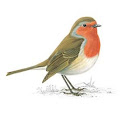
February hasn't done much for me by way of blog inspiration. I seem to be stuck in a rut. So sorry!
But the weather has been lovely, springy, sunny and good for my all-around energy levels and productivity (um, other than blogging).
As one more sign of spring in these parts, the fava beans have started to appear in the market. They come in long, knobby pods, and they are the fundamental ingredient in the Catalan dish faves a la catalana. I got to talking with the Mister's grandmother, and she promised to show me how to make them, minus the botifarra (blood sausage) that normally is another fundamental ingredient. (So fundamental, in fact, that when the lady at the market stall where she bought the beans smiled and asked if she was making faves a la catalana, iaia said no. I guess without the sausage, it's not really Catalan.)
Anyway, yesterday I accompanied her to the doctor's office, and after our little excursion it was time to make faves. We shelled the fava beans as well as some peas (she says the peas cut the acidity of the favas), then rinsed them and put them in a pot with a couple of roughly chopped tomatoes, quite a few whole garlic shoots (which also show up at this time of year), a few branches of spearmint (or mint, but spearmint is what she had growing on her terrace), plenty of salt, a pinch of sugar, and a bit of moscatel (she says anis--anise-flavored liqueur--is better if you have it). You don't add any water, as the beans and vegetables produce their own cooking liquid; only add a little bit if it gets dry. Covered, over a low burner, let it "xup-xup" (not sure how to translate that charming expression that evokes "soaking up" the juices; Catalan cooks use it to mean a slow simmer) for a good while, twenty to thirty minutes, I'm guessing.
The end result isn't pretty, but boy is it good. The silken beans are sweet and soft, and I pretty much ate until I was stuffed.
At which point iaia brought out the fish. (Despite my protestations, no meal is considered complete at her house unless there is meat or fish involved.) I ate leftovers for lunch today and they were just as good.
Here is a similar recipe, with pictures that are much better than any I would have taken, if I had had my camera, which I didn't, because the Mister has it, because he's in Bulgaria and promised me some photos.
Now the trick will be to see if I can replicate the deliciousness in my own kitchen.
Before that, though, I have another experiment to perform. Every time I go to the market, I've been trying to come home with one unfamiliar item--usually a vegetable I've never cooked before. Saturday, I spotted a lumpy green round thing that looked sort of like celery root or fennel but wasn't. It had shiny green skin like the stalk of a broccoli, and small stalks coming out of the top. I asked the market lady what it was, and she said it was a cross between a cabbage (col) and a radish (rave). Intrigued, I brought it home and consulted my trusty How to Cook Everything Vegetarian (Mark Bittman). Sure enough, his description of kohlrabi fit the bill. I should have figured it out in the first place, from the Catalan, col-rave : kohl-rabi (from the German, for cabbage-turnip).
I found some suggestions here for what to do with kohlrabi, but I'm not sure which direction to go...
25 February 2009
Favas and kohlrabi
Subscribe to:
Post Comments (Atom)

5 comments:
What fun! I would go the Indian route with the kohlrabi... I can never resist those Indian spices!
The preparation of the fava beans sounds incredibly delicious. They aren't something that we've cooked too often, but you've inspired us to pick some up. For the kohlrabi, I would agree with kateisfun. Many of the Asian cuisines use kohlrabi quite a bit, and it nearly always is tasty. Last year we found a purple kohlrabi for the first time at a local farmer's market, which we sliced, sauteed, topped with a bit of soy. But many of the recipes on Elise's site looked good, too.
Todd-WORC
Dear Robin, I came across your blog because I was looking on the internet for places where I could buy kohlrabi in Barcelona. Where on earth did you find it? I am German and just love kohlrabi, and I even found out that the kohlrabi for Germany is produced mostly in Spain, but as nobody eats it here, they don´t sell it in the supermarkets, and I have never seen it in ever other shop, neither.So I would be delighted if you could publish where you bought it.
By the way, for me the best way to eat it is just raw, as a little snack. Delicious!
Salutacions,
Sonja
Kate and Todd,
I ended up making a delicious soup! Next time I'll try an Indian preparation, but I wanted to taste it for the first time without too many spices.
Sonja,
I found the kohlrabi in the market of Les Corts. The seller did mention that it was an unusual thing to have, and that a German customer was overjoyed to find it! You might have some luck in the Boqueria market--according to my husband's grandmother, you can find anything there, and I tend to concur. Good luck with your search!
Dear Robin,
thanks a lot, I´ll check both places. Greetings!
Sonja
Post a Comment